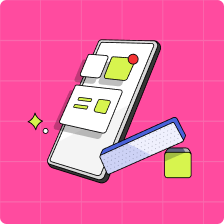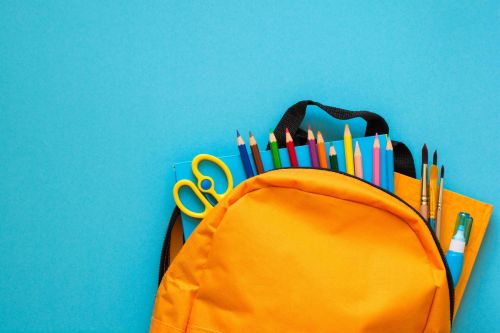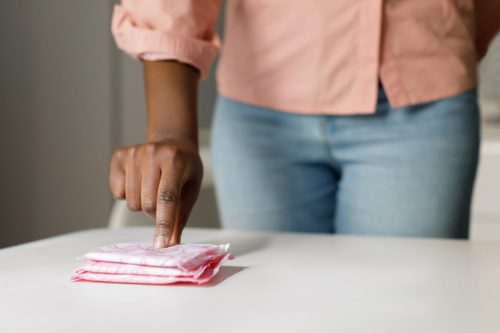As parents, we’re often our child’s first role model. That’s also true when it comes to money. While feeling responsible for our childs’ “financial education,” may sound daunting, it doesn’t have to be! Here’s how you can talk to your kids about finances, as well as some practical tips to help them build a plan to earn and save their own money.
When should kids learn about saving money?
Research shows that kids’ money habits are formed by the age of seven-years-old—so the earlier you can teach them about saving money, the better!
One of the most challenging aspects of teaching financial literacy is we may not have gotten much in the way of education when we were young. Anyone who has heard “money doesn’t grow on trees,” will know what we’re talking about! Financial education, a.k.a. “the money talk,” can start earlier than you think. After all, young children are sponges. Even by watching you buy things at the store, your preschooler is figuring out the power of money. This is backed up by researchers at the University of Cambridge.
Read more about why kids and teens should start saving money early
How do I talk to my kids about saving money?
Kids are naturally (and relentlessly) curious. When they’re young, explain that in order to earn money, you need to work; that money is an exchange of energy. It doesn’t appear as if by magic. If you’re out shopping and they ask for their favourite toy, that’s a teachable moment to explain you don’t have the money to pay for it, but they could use the money in their piggy bank another time. Before you head to the supermarket, set a budget and involve them in sticking with it.
As your kids grow older, let them know they can come to you with questions, or involve them in money-making decisions that affect the whole family, like whether to book a cottage or take a road trip in the summer. If you’re negotiating a new job offer or researching which robo advisor to invest with, share the experience with them. Be open and honest about the realities of making and saving money. The bottom line when it comes to teaching our kids about money, is to start. Answer their questions truthfully. And if you don’t know, well, that’s a teachable moment for you both to look online or speak to a financial advisor and seek out the answer.
Read more about the parents guide to financial literacy for kids

7 tips for teaching kids to save money
Here are some strategies parents can use to help their kids earn, save, and even wisely spend their own money. If your kids learn to practice good money habits when they’re young, they’ll be firmly on the path to becoming financially responsible adults.
1. Learn the difference between want vs. need
One of the most essential skills your child can learn when it comes to saving money is understanding the difference between a want and a need. Why? Once they grasp a “need” is a new pair of sneakers for phys ed, but a “want” is a trendy pair of black Nike Huarache trainers, they can make decisions about how to spend their own money. Is the item something they need or simply want? And is it worth spending their cash on? Learning the difference will help empower your child to make decisions to save for what really matters.
2. Set a savings goal
Help your child set a savings goal. Maybe it’s a bluetooth karaoke system or cool Air Hog drone. Whatever it is, ideally, it should be a goal that excites them! It should also be a realistic savings goal. After all, a year is an awfully long time in a nine-year-old’s life. Make sure it’s just long enough that your child is willing to delay gratification in order to get what their little hearts desire. If they don’t know how much the item costs, research the cost, so they know exactly how much to save. Remember those fundraising charts that were shaped like a thermometer? Encourage your kids to draw their own and colour it in as their savings grow each week. That way they have a visual representation of what it is they’re saving for and how close they are to success.
Tip: Mydoh’s savings goal calculator for kids makes it easy to see how long it’ll take kids and teens to reach their goals!
3. Encourage kids to make their own money
In order for kids to learn how to manage their own money, they first need to have their own dough. On top of receiving money for birthdays or holidays, encourage your child to make their own. The most obvious way is through an allowance, which can be tied to daily or weekly chores. Even kids as young as three-years-old can benefit from helping. Chores not only help develop responsibility, but your child will feel like they’re contributing to the family. Encourage older kids to earn their own money outside the home, whether that’s making money online as a kid, a part-time job babysitting, or walking the neighbourhood dog.
Read more about how to encourage kids to start a business at a young age.

4. Give them opportunities to earn money
Tackling tasks at home is a great way for kids to earn extra income. These chores could be daily (like making their bed) or weekly (watering the plants). Mydoh makes doing chores easier. Parents can create daily and weekly tasks in the Mydoh app, which helps kids aged six and up to keep track of what needs to be done. Instead, Mydoh does the work of nagging for parents with reminders to complete tasks! Set a task, enter a completion date, and assign a dollar amount for that particular chore. As kids complete each task and mark it “done” they’ll bank some coin, which is automatically paid out on Pay Day. Mydoh comes with a Smart Cash Card, so kids can spend what they earn.
Read more about best chores for kids to earn money.
5. Have a place to save money
Earning money is one thing, and being able to spend it is another (and your kid would argue way more fun!). But, being able to save it is an important part of financial literacy too. After all, we’d argue there’s only so many Squishmallows one kid needs. Graduate your kids from their first piggy bank to their own savings account, like RBC Leo’s Young Savers account. Having a real bank account helps kids feel a sense of ownership over managing their own money. For older kids, guiding them through accessing their account online takes the mystery out of things like logging on to pay a bill or send an e-transfer. Look for a bank account with low or no monthly fees, no minimum balance, and easy access to the funds.
Read more about opening a bank account for your child.
6. Don’t punish mistakes
We all make mistakes when it comes to money. Your kids will be no different. They’ll spend on an item they’re convinced is a “need,” only to discover it’s a fleeting “want.” Or they’ll buy a new video game without seeing if it’s on sale elsewhere. Part of helping kids learn about money is allowing them to make mistakes. Instead of punishing them or lecturing, discuss their choices and ask your child what they’d do differently next time? What did they learn from their experience? Mydoh also makes it easier for parents to “put pause” on their kid’s spending with its “lock card” feature. On the flipside, it’s tempting for parents to swoop in and rescue our kids when they make a mistake. However, there’s also value in resisting our impulse to protect. Your child will learn money is a finite resource, once they’ve spent it, it’s gone. Better to learn that lesson now when they’re young, rather than 28! That way, they’re more likely to make wiser choices in the future.
Learn more: 10 money mistakes teens make and how to avoid them.
7. Set a good example
This is probably the hardest tip for parents to embrace. Setting a good example when it comes to money means practicing what you preach. And while we all wish we were Warren Buffett, it’s okay to fess up to your own money mistakes, or show your children that you’re always open to learning. Next time you go online to pay the bills, get your child involved. Teach your kid how to use a credit card responsibly (and explain to them why it’s important to do so!). Another way to set a good example is to give age appropriate examples of what you spend—and why. It could be explaining why you chose a generic brand of apple juice over the branded juice boxes, or why you made the decision to buy a second-hand car outright vs. leasing a brand new model (hint: cars depreciate in value!). What’s important is looking for ways to share your money-making decisions with your kids and demystify the world of finances.
Learn more: 10 common money mistakes parents make and how to avoid them.
The best way to teach kids to save money is giving them real-world experience
Mydoh is a money app that comes with a Smart Cash Card designed especially to give kids some real-world experience of making their own money, as well as saving it or spending it on what their heart desires. Parents can create weekly tasks for their kids to tick off and set up a weekly allowance to their kids’ Mydoh Smart Cash Card. Learn more about how Mydoh works.
Download Mydoh today to learn more.
This article offers general information only and is not intended as legal, financial or other professional advice. A professional advisor should be consulted regarding your specific situation. While the information presented is believed to be factual and current, its accuracy is not guaranteed and it should not be regarded as a complete analysis of the subjects discussed. All expressions of opinion reflect the judgment of the author(s) as of the date of publication and are subject to change. No endorsement of any third parties or their advice, opinions, information, products or services is expressly given or implied by Royal Bank of Canada or its affiliates.






















